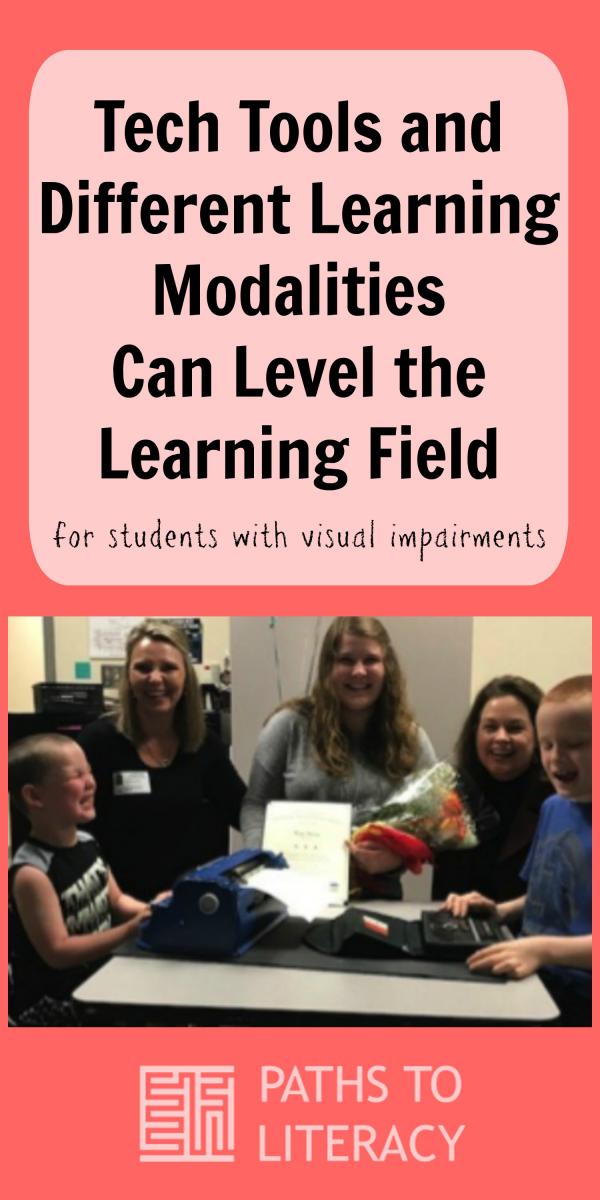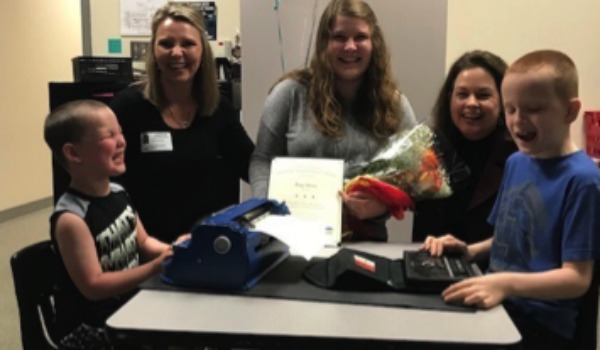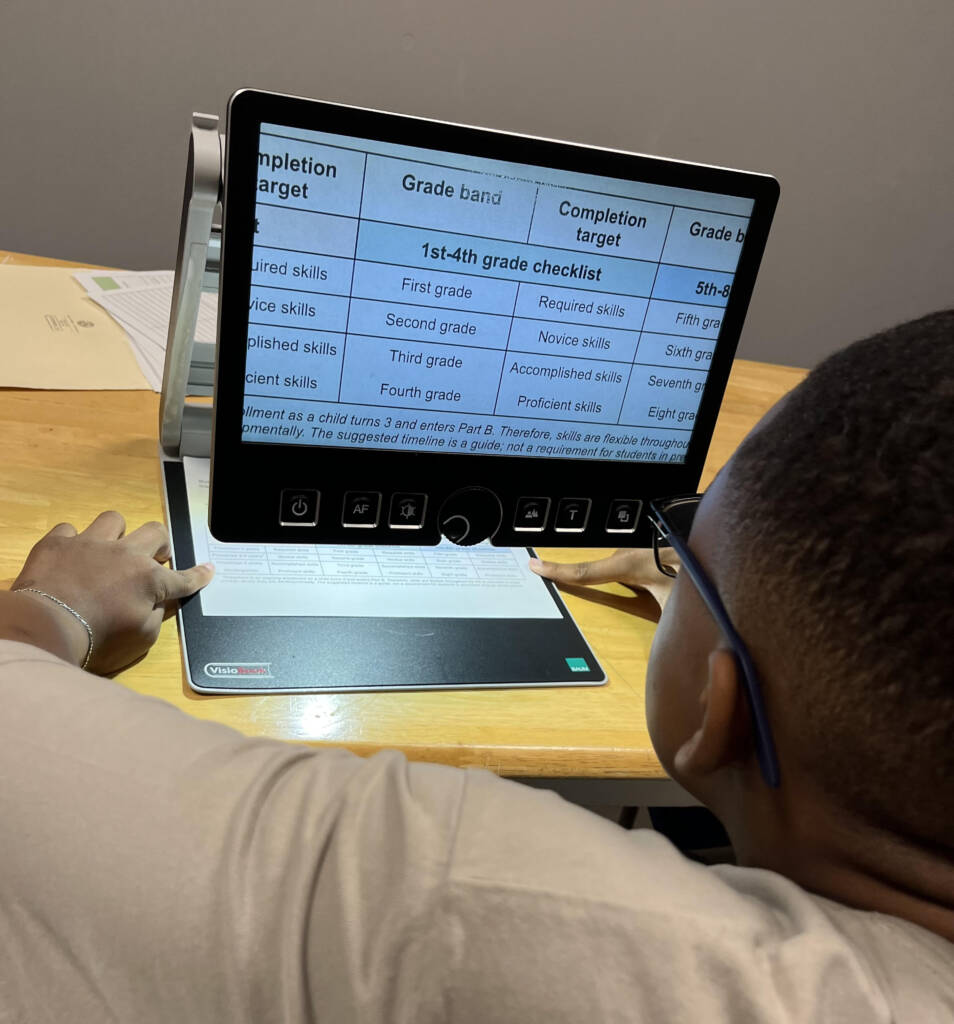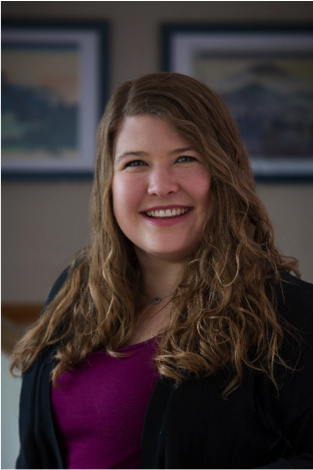 Paige Morra wanted to be an engineer. She thought her career goals were all set until she interned and completed her practicum for Dr. Edward Bell, a professor who directs the Louisiana Tech Graduate Programs for the Professional Development and Research Institute on Blindness.
Paige Morra wanted to be an engineer. She thought her career goals were all set until she interned and completed her practicum for Dr. Edward Bell, a professor who directs the Louisiana Tech Graduate Programs for the Professional Development and Research Institute on Blindness.
Paige says, “I experienced firsthand how people, who are blind, can lead incredibly ‘normal’ lives. Dr. Bell made me aware of what is possible for people with vision impairments. They are accomplished professionals, wonderful parents, and extraordinary role models. I wanted people with visual impairments to succeed. I wanted sighted people to understand what real learning potential is for these learners.”
Paige changed her major to Family and Child Studies. She volunteered at summer camps. She learned braille and the benefits of technologies to equip students with visual and print challenges to succeed academically. She graduated with a Masters of Art in Teaching, and now works at Plano Independent School District (Texas) as a Teacher of the Visually Impaired, (TVI).
Paige is the first TVI to receive Learning Ally’s Winslow Coyne Reitnouer Excellence in Teaching Award for her remarkable contributions to the field of special education and her unwavering belief that students can achieve great things with the right tech tools and learning modalities. “I fell in love with the field,” she says, “It was like a door opened and said, ‘You can make a real difference!'”
Multi-Modal Learning Works with Accessible Curriculum and Assistive Technology – “Ear-reading”
Many of Paige’s students learn in braille because they like the tactile form of comprehending curriculum. Other students learn through audiobooks, sometimes referred to as “ear-reading,” because they prefer to listen to text narrated by subject experts. “This modality enhances students’ comprehension and critical thinking skills,” says Paige. “They get the full context of the story. It’s awesome to see children with headsets on so absorbed in a story or giggling about something they are reading.”
A fourth grader with a degenerative eye condition prefers to follow the printed book in braille and follow along through headphones with human-narrated audio. “The Learning Ally library made a huge difference for students to get their books on time in accessible audio format,” she says.
Using Technology Can Help Students to Become Independent Readers
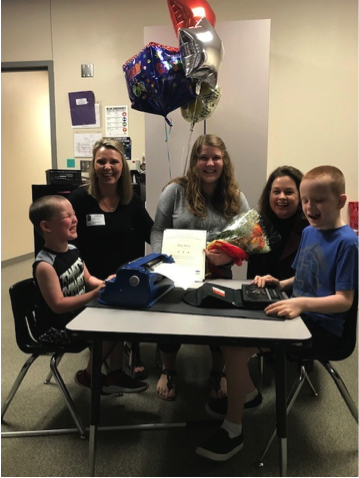 Some students have short attention spans – a challenge for many teachers — but with quality education technology, these students are super engaged learners.
Some students have short attention spans – a challenge for many teachers — but with quality education technology, these students are super engaged learners.
“Whether they use a Perkins Braille Writer, a Mountbatten, a Braille Note Apex or Learning Ally audiobooks, these tools keep students ahead of the curve, on grade level and socially no different than other students. This is a good thing to feel and look normal, just like everyone else,” said Paige.
She believes that when children with learning differences start early to use technology they become independent readers. Using an iPad with the Learning Ally mobile reading app, students can easily enlarge font size to reduce eyestrain; bookmark chapters or sections to take notes for reports; and follow precise page numbers as a printed textbook. “These functions level the learning field for students, especially as they progress to upper grades and prepare for college,” said Paige who is always thinking about her student’s future.
